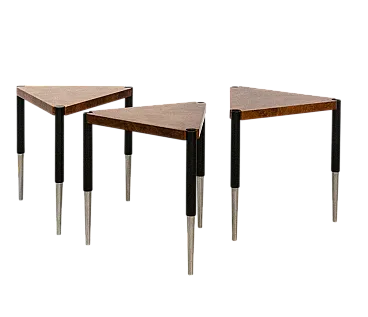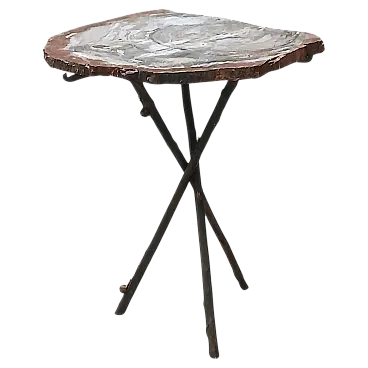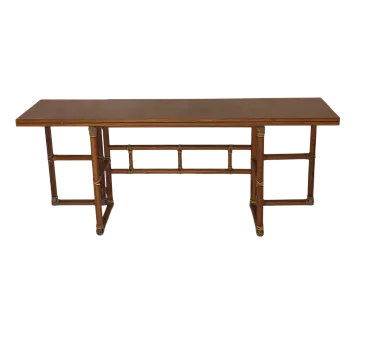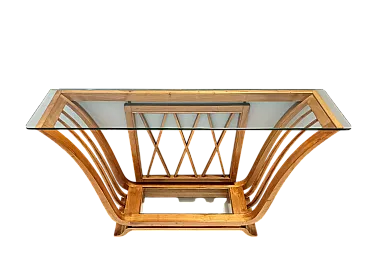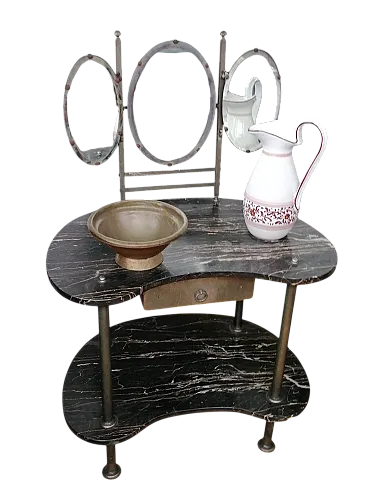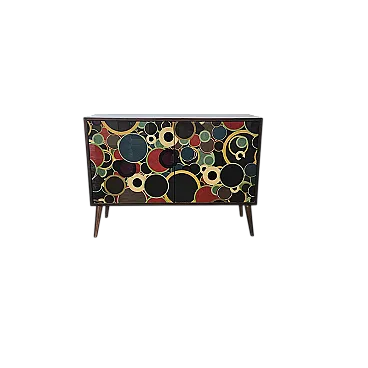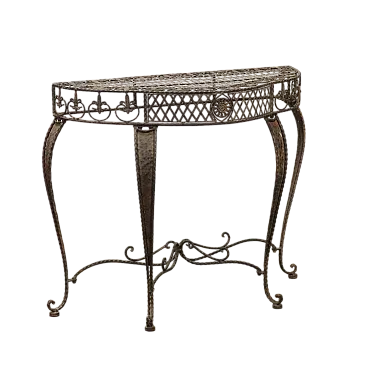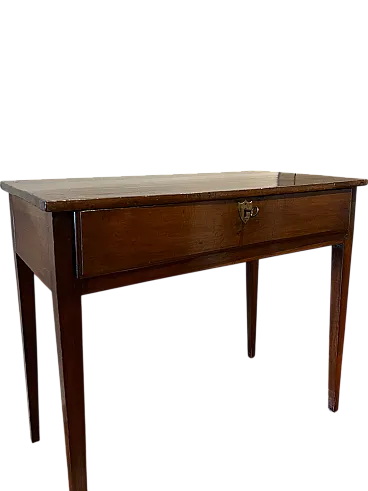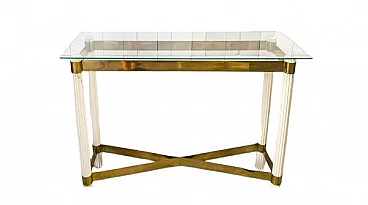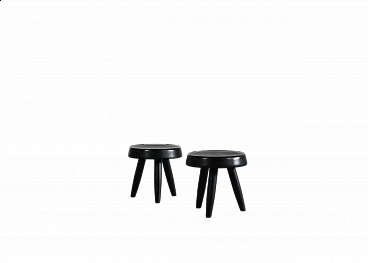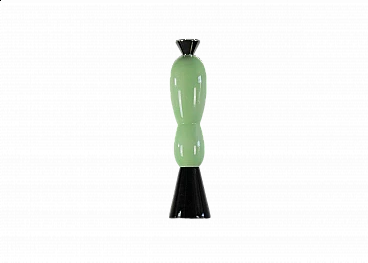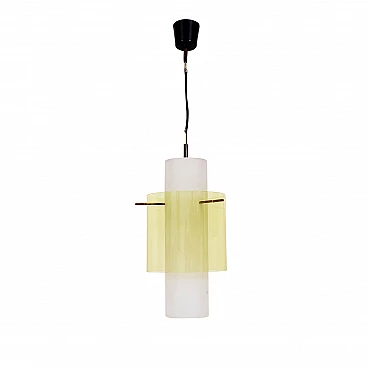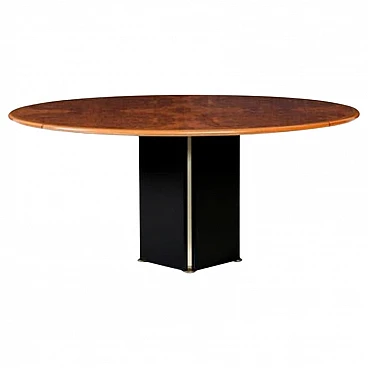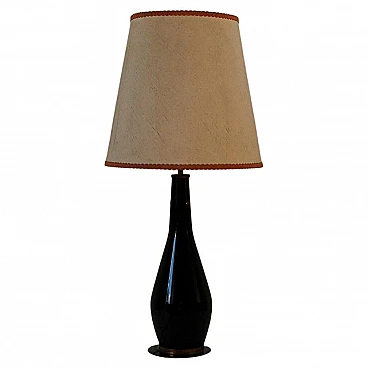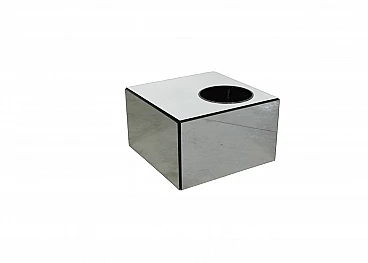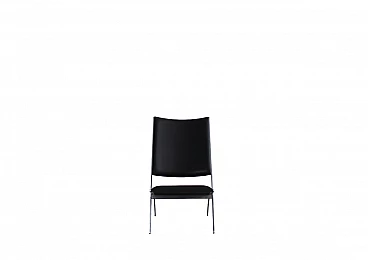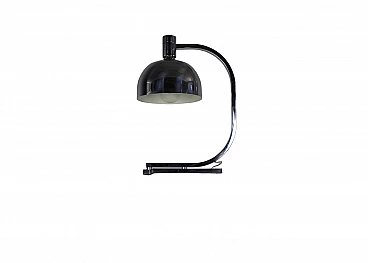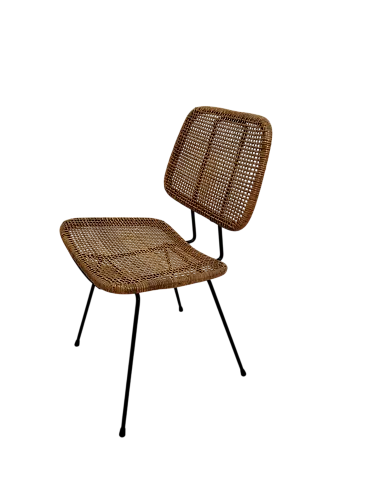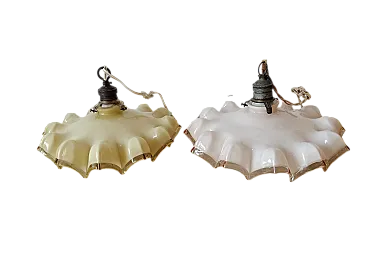Ara console table with wooden frame and glass top designed by Lella and Massimo Vignelli and produced by Driade in 1974. Licence: G. Gramigna, Repertorio del Design Italiano 1950-2000, p. 225, Allemandi, 2003. Massimo Vignelli was born in Milan on 10 January 1931. He attended an art school, the Brera Academy of Fine Arts, before graduating in Architecture at the Milan Polytechnic in 1953. Between 1953 and 1957, he attended the Faculty of Architecture and the University of Venice. At the beginning of his professional career, his main area of expertise was the graphic design of products and the creation of corporate identities. In addition, Vignelli developed a design for the 'Fungo' table lamp and created a series of lighting fixtures. In the late 1950s, he obtained a scholarship in the United States at Towle Silversmiths, Massachusetts, and the Institute of Design in Chicago. In 1957, he married Lella Vignelli, whom he met at an architecture conference. A few years later they founded their small design studio, the Lella and Massimo Vignelli Design and Architecture Studio, in Milan. The studio dealt with the design of domestic products, office accessories, graphics and furniture. In 1965, the Vignellis moved to Chicago, USA, where they founded Unimark International, which dealt specifically with corporate graphic design. It was the Vignellis' innovative idea of introducing Helvetica typography into visual communication that went viral throughout the United States. The Vignellis employed rudimentary geometric shapes such as the cube, pyramid, spheres and cylinders in a series of products. These designs appeared balanced, appealing and functional. According to the firm's founder, the designer should be able to design anything from a needle to an entire metropolis. The company introduced a wide range of design programmes, from environmental planning to tableware and packaging, showing versatile and innovative ideas. In 1966, Vignelli expanded its business and launched a branch of Unimark International in New York. The company soon became the largest in the world due to its expansion into a range of sectors and coverage of different lifestyles. The firm is proud to have created some of the most important and prestigious corporate identities, including that of American Airlines. Vignelli designed the signage for the New York underground system and the Washington Metro. In 1971 he resigned from the company, which moved away from the vision he had created and focused exclusively on product marketing rather than design. Subsequently, Vignelli and Lella founded another company, Vignelli Associates. Once again the firm attracted high-profile clients seeking assistance with corporate identity. These high-profile companies included Knoll, Bloomingdale's and IBM. In addition to art direction, Vignelli also wrote a book, entitled Vignelli: From A to Z. The book details Vignelli's ideas and vision regarding graphic design in the form of essays. The essays are organised alphabetically, as the title suggests. In fact, they are based on more or less the same course that Vignelli taught while teaching at Harvard's School of Design and Architecture. In 2009, Vignelli launched a free e-book, The Vignelli Canon, with the aim of passing on his legacy and treasure trove of design knowledge to young designers. Massimo Vignelli died on 27 May 2014.
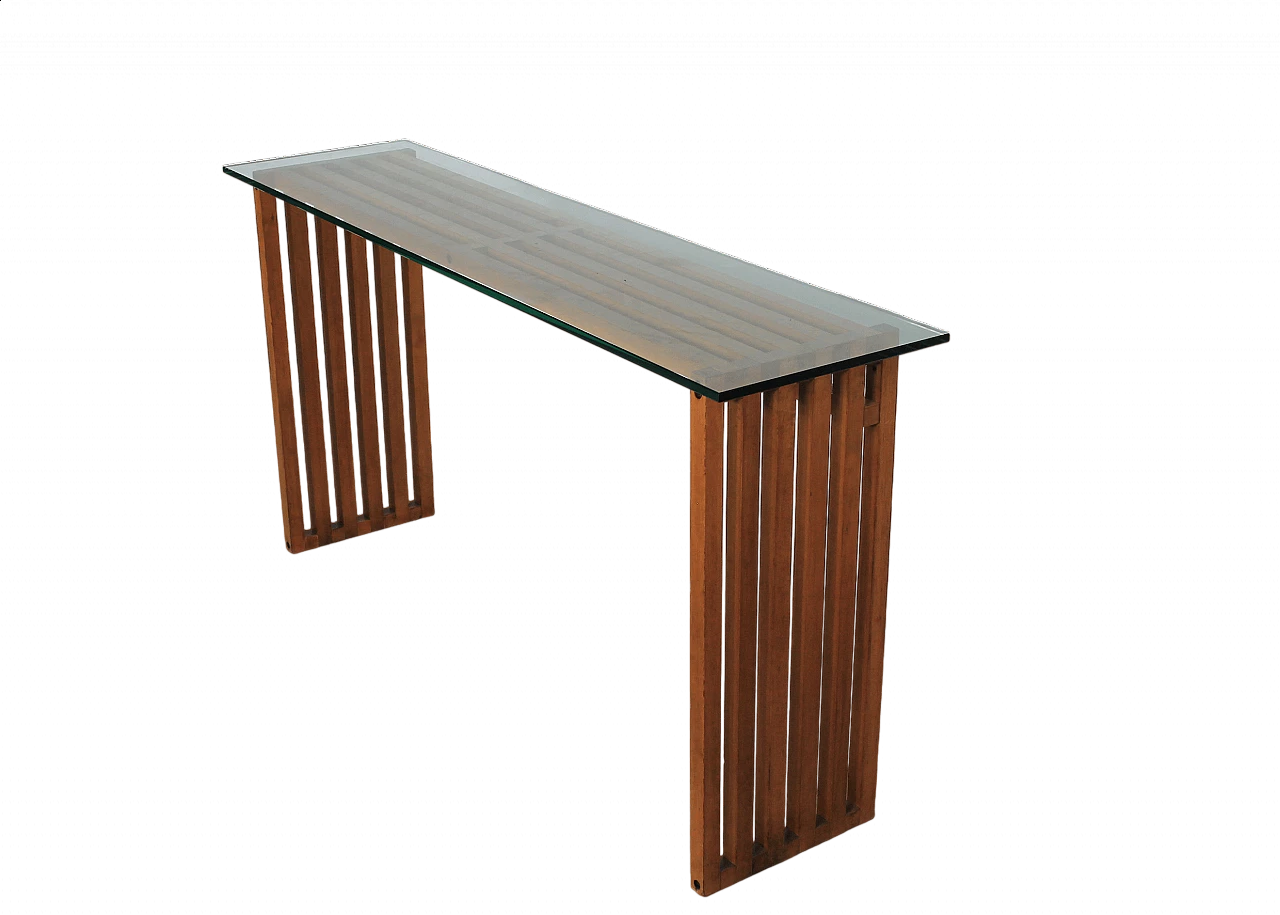
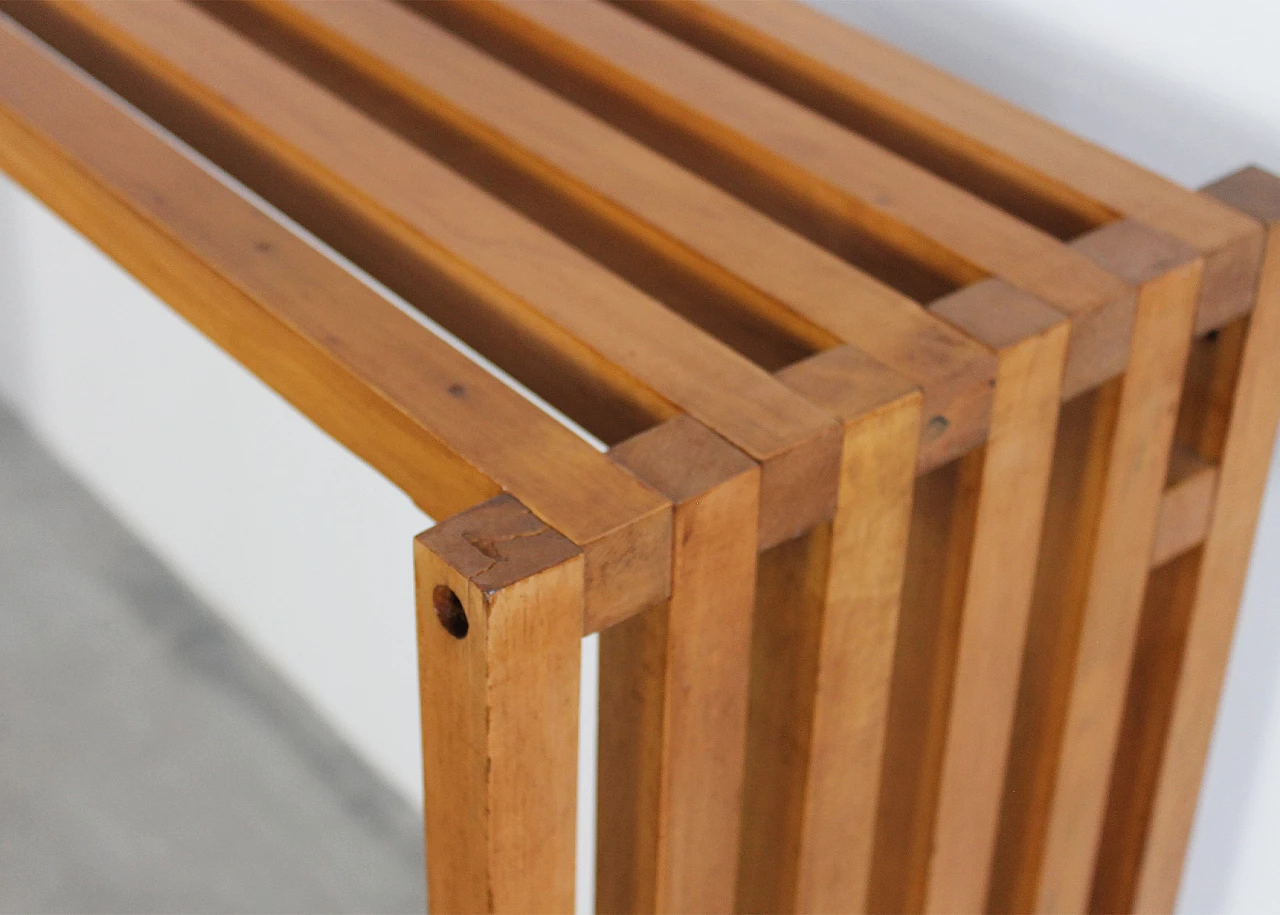
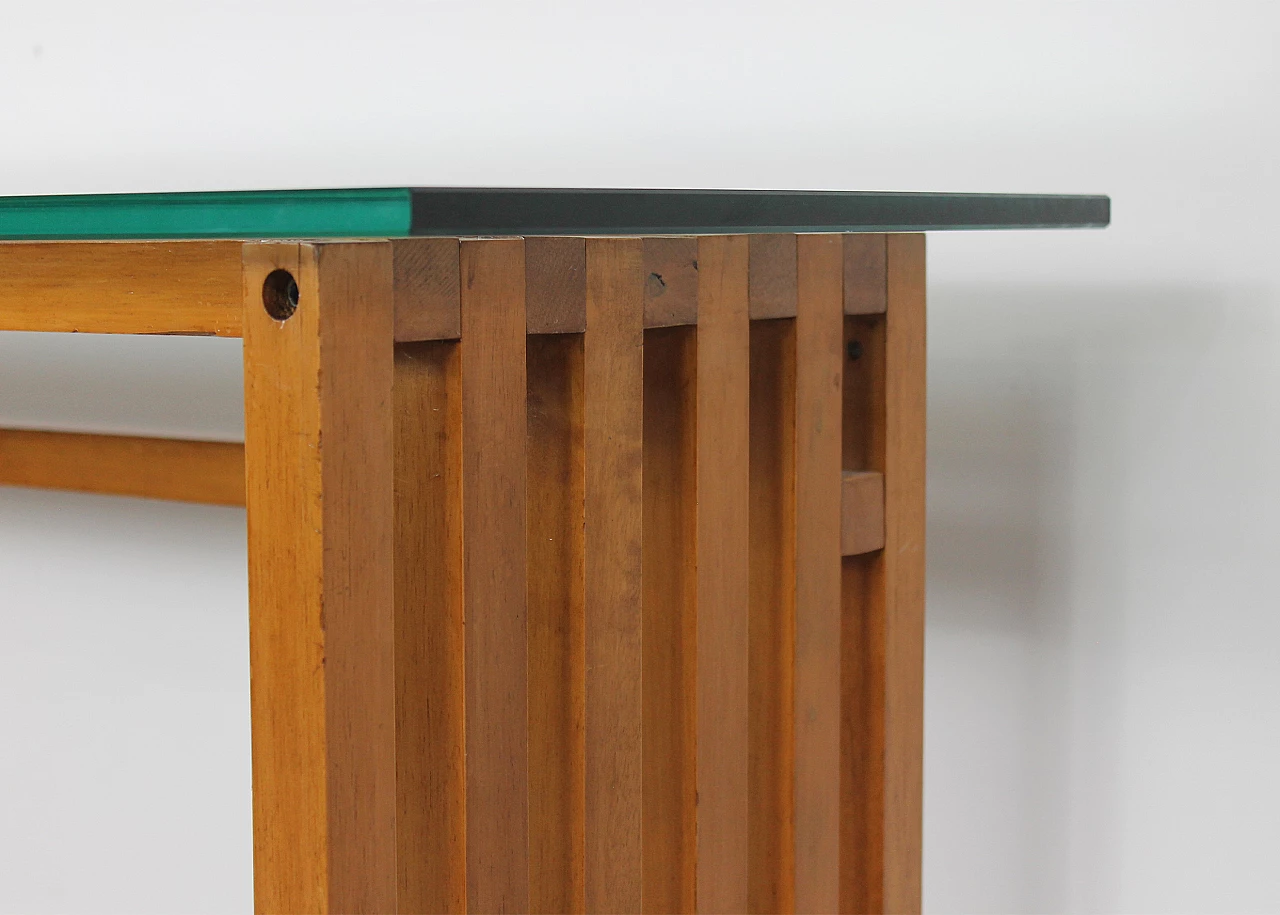
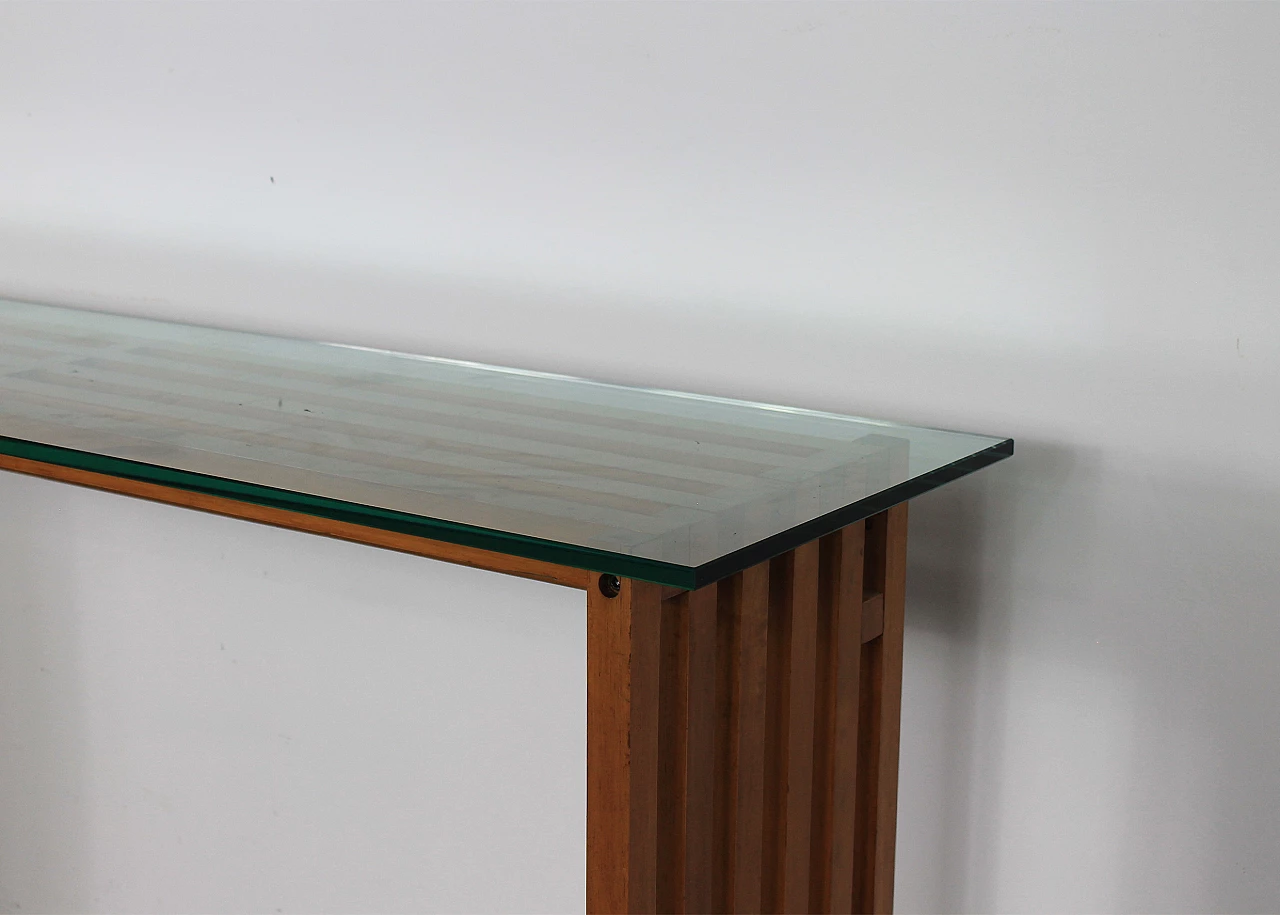
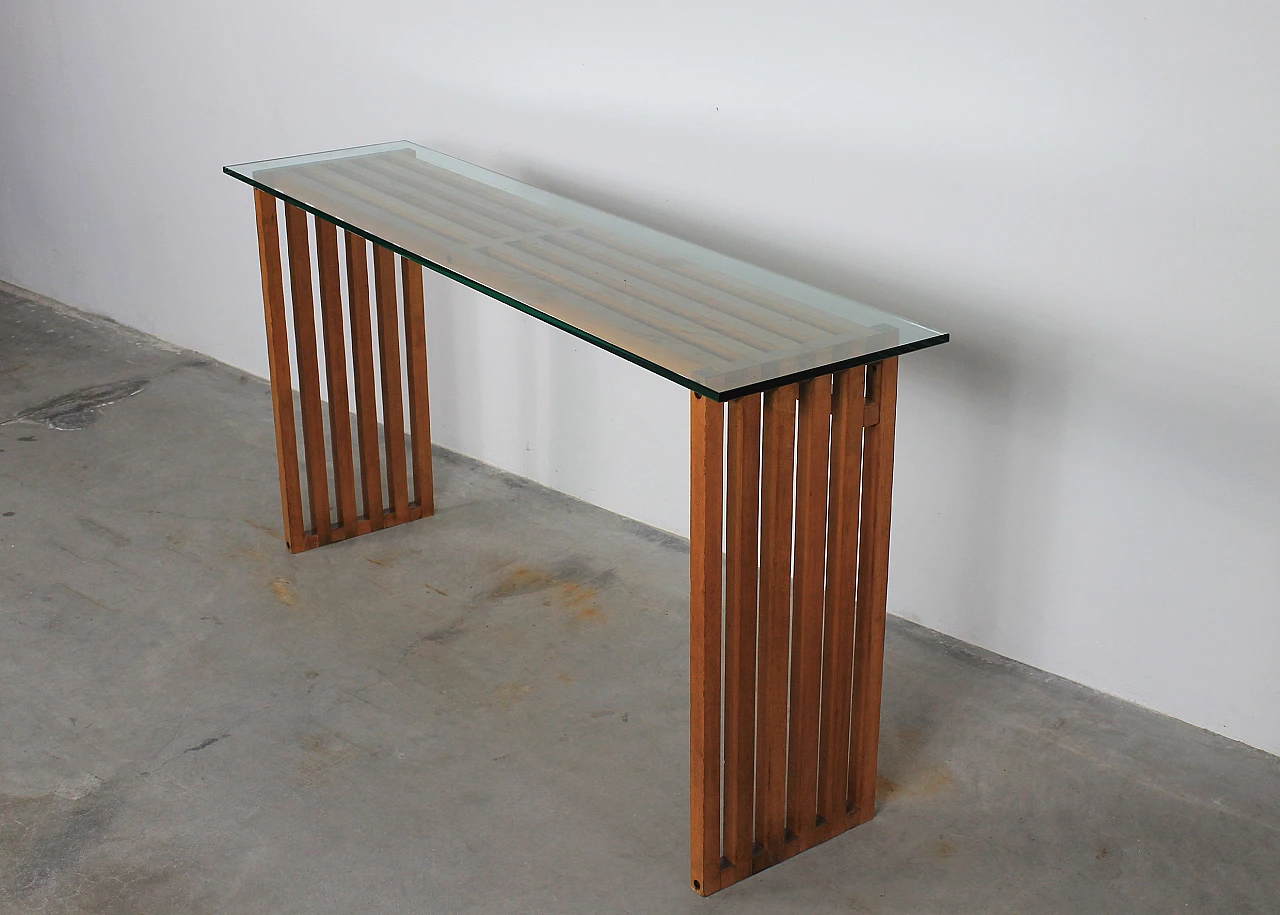
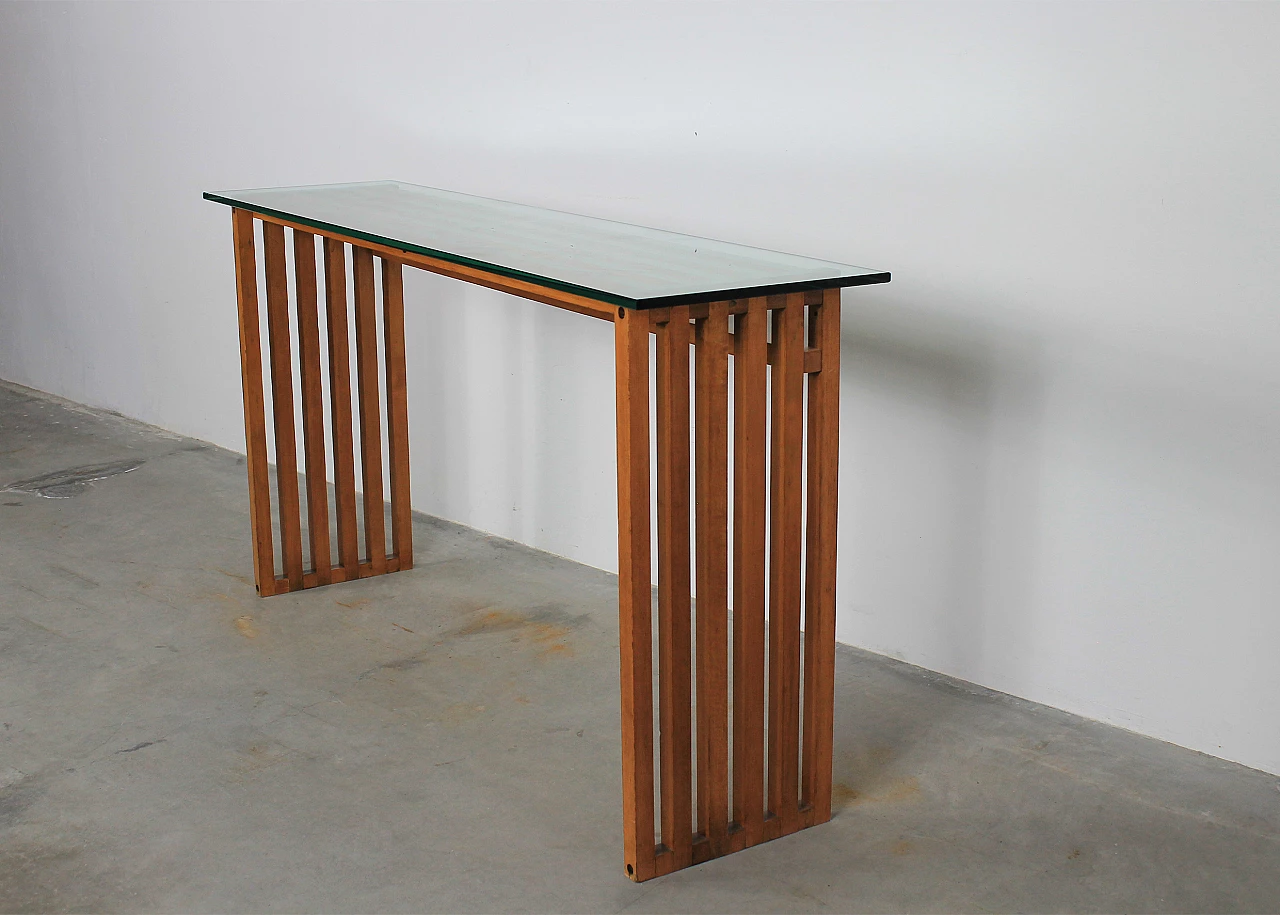
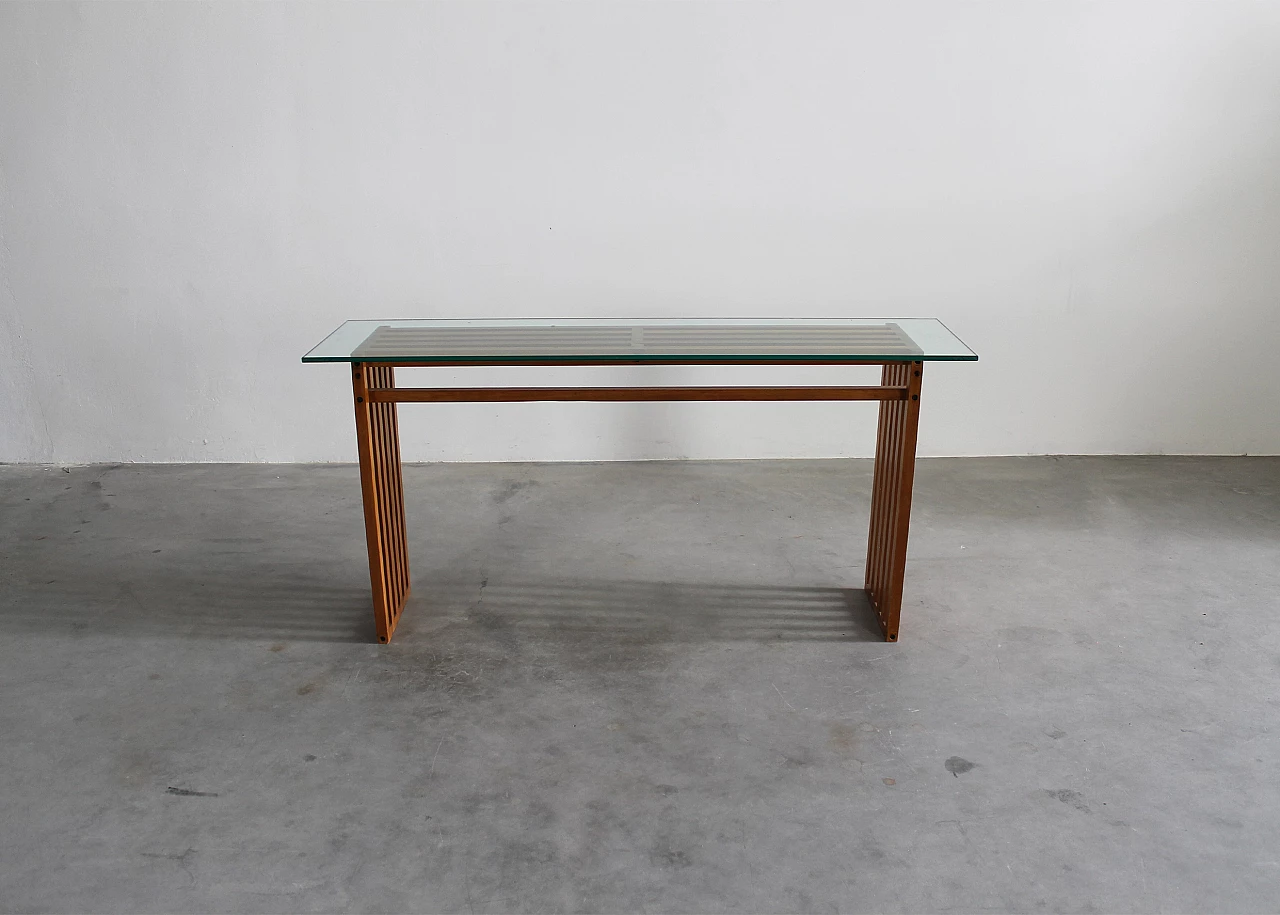
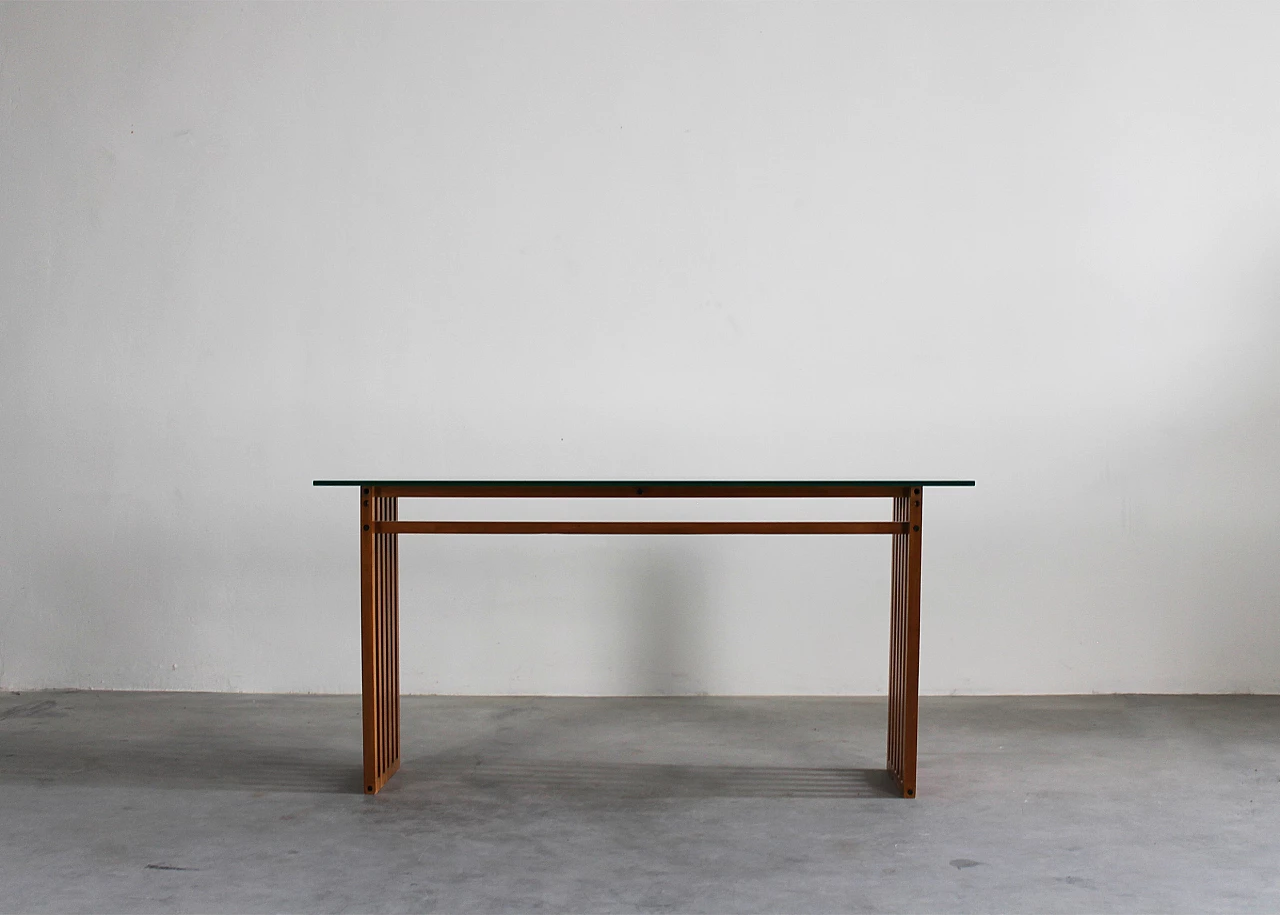
 SILVER Seller in Pistoia, Italy
SILVER Seller in Pistoia, Italy






.png)





